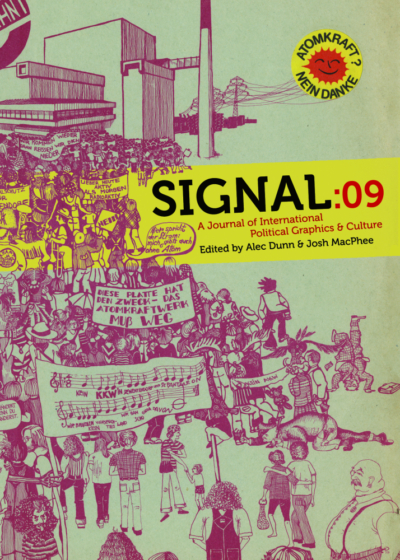Gramsci is Dead.
£13.31
Gramsci is Dead: Anarchist Currents in the Newest Social Movements by Richard J. F. Day
Description
“Inspired to contribute to the symbiotic relationship between the academic and activist worlds, Day has decided to pick up the pen instead of the Molotov cocktail. The result is this brilliant book.” Ann Hansen Ann was sentenced to life imprisonment for blowing up a cruise-missile component factory, and is the author of Direct Action: The Memoirs of an Urban Guerilla “If revolutionary politics are to be reconstituted for the twenty-first century, all previously existing radical traditions must not only be remade but placed in new relationships with one another. The anarchism of Richard Day’s brilliant Gramsci is Dead is not only an explosive break-out from the demoralizing horizons of contemporary social democracy, but also an exuberant intellectual dance-invitation extended to all mutant Marxists, autonomists and species-being activists eager to catch the strains of a new tune: Red Emma would be proud.” Nick Dyer-Witheford, Associate Professor, University of Western Ontario and author of Cyber-Marx (1999) Gramsci and the concept of hegemony cast a long shadow over radical political theory. Yet how far has this theory got us? Is it still central to feminism, anti-capitalism, anti-racism, anarchism, and other radical social movements today? Unlike previous revolutionary movements, Day argues, most contemporary radical social movements do not strive to take control of the state. Instead, they attempt to develop new forms of self-organisation that can run in parallel with — or as alternatives to — existing forms of social, political, and economic organization. This is to say that they follow a logic of affinity rather than one of hegemony. This book draws together a variety of different strands in political theory to weave together an innovative new approach to politics today. Rigorous and wide-ranging, Day introduces and interrogates key concepts. From Hegel’s concept of recognition, through theories of hegemony and affinity to Hardt and Negri’s reflections on Empire, Day maps academia’s theoretical and philosophical concerns onto today’s politics of the street. Ideal for all students of political theory, Day’s fresh approach combines Marxist, Anarchist and Post-structuralist theory to shed new light on the politics and practice of contemporary social movements.
The main purpose of the book is to genealogically trace a division between hegemonic and affinity forms of social activity and organisation, particularly the latter – hence falsifying the claim that hegemony is a necessary part of (radical) politics by showing that logics of affinity also operate in some social movements and academic theories. The necessity filled by this text is for a response to the repressive repetition of assumptions of inevitability of the current dominant system. Day’s work is magnificent in showing the sheer range, proliferation and energy of actually-existing alternatives, and is sure to become a major reference for objections to the assumption that capitalism, the state or hierarchy are necessary.
The book reads like a roller-coaster ride, or maybe a stroll, through a plethora of movements and theories, including discussions of social movements such as the Argentine piqueteros, indigenous self-determination movements, Indymedia, Food Not Bombs, Reclaim the Streets, MST and other land rights movements, the Zapatistas, and OCAP, and theorists such as Negri, Foucault, Deleuze and Guattari, Holloway, Bey, Agamben, Anzaldua, Marcos, Bakunin, Bakhtin, Derrida, Albert, Zizek, and more besides, taking in critiques along the way of Laclau, Lenin, Gramsci, Kymlicka, Panitch and other supporters of “hegemonic” logics. As this expansive list suggests, each of the cases is treated only very briefly, and connected into a longer thread which moves rapidly between settings and movements to draw out theoretical threads of the author’s devising. The point is usually to show ways of thinking and acting which are outside the logic of hegemony.
The book is divided into seven chapters, three of which are mainly about current social movements, the others being primarily theory – a chapter criticising Marxist and liberal theories, another on poststructuralism and post-Marxism, a third on utopian socialism and classical anarchism, and a fourth on autonomism, Deleuzian theory and postanarchism. The affinity-hegemony binary runs as a leitmotif through these, though they sometimes read like a set of notes and short accounts strung together.
Day has combed through huge quantities of little-known material, and his bibliography is awash with activist publications, online discussions, specially translated materials, PhD theses and obscure texts from marginal traditions. The result is that pretty much anyone reading this text – even someone very well-versed in “horizontal” political theories – will discover social movements and bodies of theory of which they were previously unaware, addressed in ways which make them relevant to the politics of affinity.
The author also has his own specific narrative which loosely joins together the pieces, giving a minimal ethical and strategic perspective of his own. This aspect of the work isn’t especially original or as well-worked as the kinds of theoretical texts Day engages with, but solidly places Day within a poststructuralist-inflected anarchist perspective. The title is quite misleading as there is little about Gramsci in the book. Gramsci is serving as a placeholder, partly for hegemony and partly for Laclauian theory; the reading of Gramsci (and of several other authors – for instance, the take on Deleuzian nomadism) are bound to be contentious with scholars of these respective theorists – a minor problem since the work is so broad in scope, but bound to irritate certain readers, especially among political theorists. This shouldn’t detract greatly from a text the main advantages of which are its scope, its eye for the barely visible, and its perspective.
Additional information
| Weight | 0.450000 kg |
|---|










